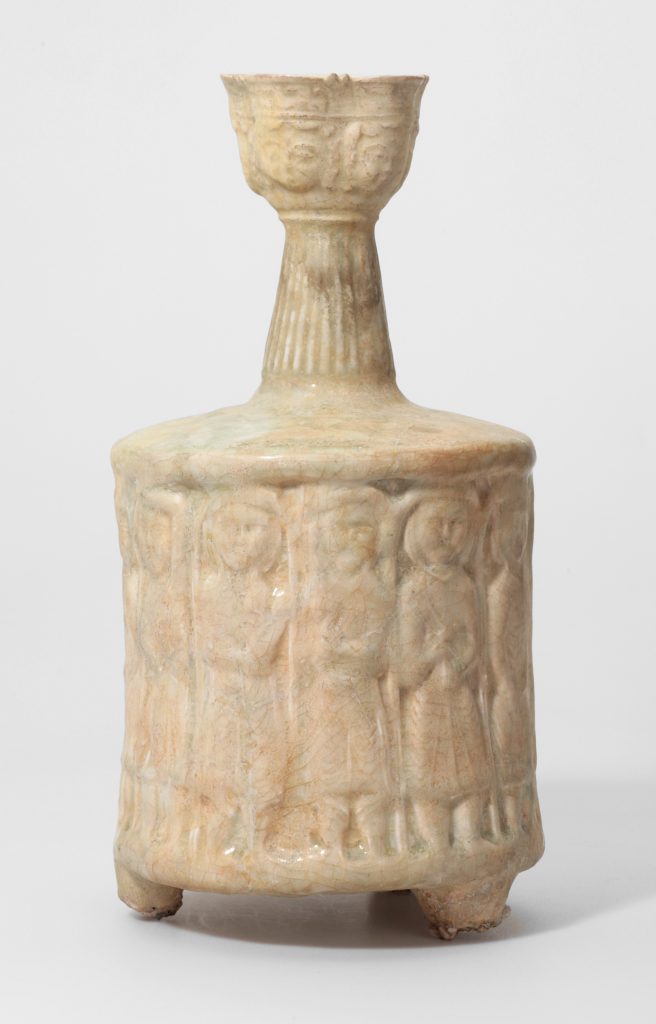



Title: Flask with Standing Figures
Date: later 12th century AD
Location: Iran, perhaps Nishapur
Materials: white stonepaste ware, moulded in two parts and carved, under a transparent colourless glaze
Dimensions: 33.4 x 17cm
Accession Number: POT 107
Other Notes:
Each of the lobes on the mouth of this unusually large flask is decorated with a human face [see POT 885]. The body is decorated in low moulded relief with a row of tall and slender male figures in long robes and high boots. However, unlike other examples of this type where the figures appear to be dancing, here they seem to be standing still, each possibly holding an object in his hand.
With the appearance of frit wares in 12th-century Iran, moulds became more necessary, since their silicon-enriched stonepaste bodies, like sugary pastry, were too crumbly to be thrown on a wheel. This made it possible to produce very fine, thin pottery, which, like contemporary Chinese porcelain, was often translucent. Moulds could, of course, be used for blowing glass as well as for casting metal; it is not, therefore, surprising that the shape of this flask with its cup-shaped mouth and knob feet, parallels contemporary Iranian mould-blown glass.
Bibliography:
E.J. Grube et al, Cobalt and Lustre. The First Centuries of Islamic Pottery, The Nasser D Khalili Collection of Islamic Art, volume IX, London 1994, cat.152, pp.159, 161.
J.M. Rogers, The Arts of Islam. Masterpieces from the Khalili Collection, London 2010, cat.120, pp.108–9.
Zoom
Close

Create your own collection of artworks that you can print or save as a PDF. Please enter you email to enable feature.
Small Flask | JLY 1075
Has been added to your collection.
TIP:
You can now access and view your collection from the main menu at any time.